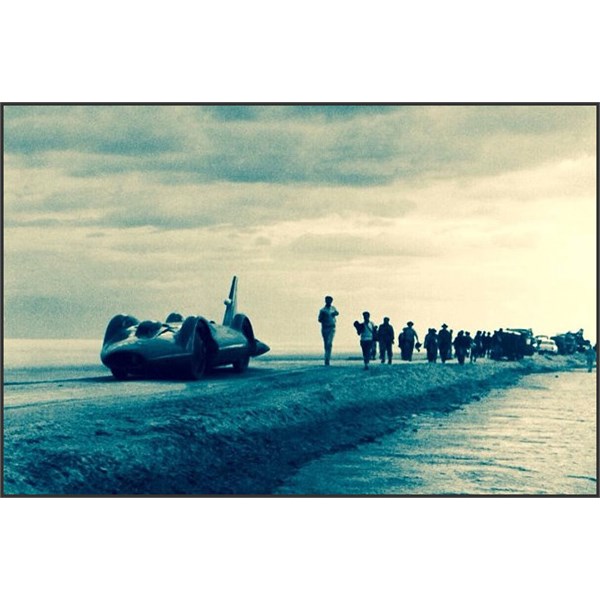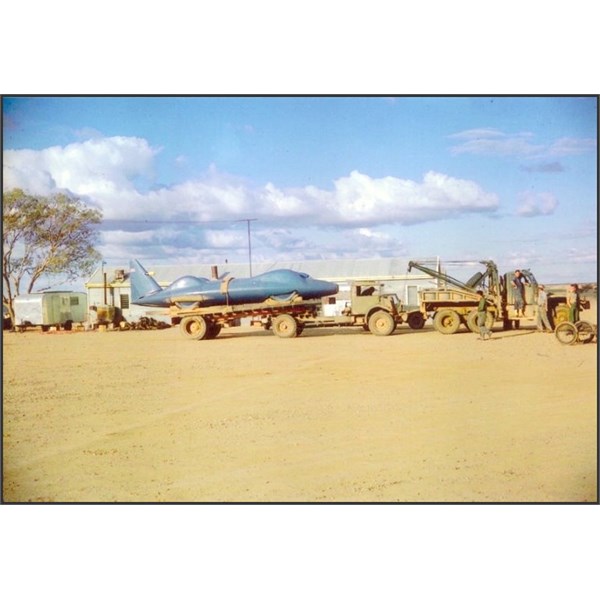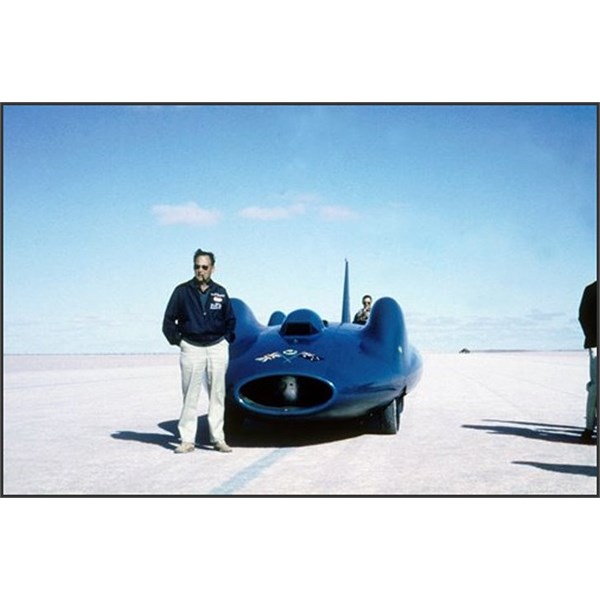last year on July 17th Speed ace Donald Campbell’s Bluebird land-speed record at
Lake Eyre turned 50
On that date was his second attempt (1963 was a wet year), Donald Campbell set the land speed record on the dry salt pan of
lake Eyre in his famous Bluebird car. For the attempt Campbell and his entourage of nearly 500 people – engineers, technicians, police and army personnel, reporters and others – had their headquarters at
Muloorina Station.

Bluebird and team depart from the salt of Lake Eyre in May 1963 on the causeway from saltpan to road and on to Muloorina Station,
The land-speed record was in the bag, Donald Campbell was returned as the fastest man on the planet, Bluebird was the quickest car and South Australia’s
Lake Eyre salt pans in the state’s Far North were forever etched as the vital ingredient that helped make it happen.
Fifty years ago , at precisely 8.10am, Englishman Campbell became the first man to break the 400 mile per hour limit in a wheel-driven vehicle.
On July 17, 1964, with back-to-back passes in opposite directions near
Muloorina Station, Campbell registered an average speed of 403.1mph (648.7km/h).
At the time — even though a year earlier American Craig Breedlove in his three-wheeled, jet-engine powered Spirit of America had registered a faster 407.4mph — official records recognised only wheel-driven vehicles.

Donald Campbell and The Bluebird on route to Lake Eyre for world land speed record attempt in July 1964.

Bluebird K7 is wheeled across the salt of southern Lake Eyre
It took almost 7km to work up to full speed. At the average speed of 403.1mph, it took just 8.9 seconds to chew up the “measure mile”. From there, Campbell had 11km to stop Bluebird for his maintenance crew to prepare for the reverse run.
Under strict rules, he had an hour to complete the return leg.
By 8.10am, posting the same average time as his first run, Campbell had overtaken fellow Englishman
John Cobb’s previous record of 394.2mph (634.4km/h).
Barely five weeks earlier, Beatle-mania had hit
Adelaide when 300,000 fans of the British supergroup spilt into the city streets to catch a glimpse of the Fab Four.
Campbell’s crowd didn’t quite topple Beatle-mania, but an estimated 200,000 people gathered in celebration to see him drive his sleek, four-tonne vehicle along King William St,
Adelaide, to the Town Hall on July 25, 1964.
Reports from the time suggest Campbell revved the engine to a huge roar, sending the crowd wild.

Transporting to Lake Eyre 1964

Donald Campbell With Bluebird
Campbell’s record, unlike its legacy, was only fleeting. By December 11, less than five months after his
Lake Eyre success, previously opposing regulatory federations agreed to open the record to any vehicle running on wheels.
Campbell was already committed to becoming the first man to break both the land-speed and water speed records in the same year.
He achieved the double on December 31, when he clocked 276.3mph (444.7km/h) at
Lake Dumbleyung , WA in his Bluebird K7 boat.
Soon after, Campbell mapped out a three-year plan to build and race a rocket-powered vehicle capable of 840mph (1350km/h) — named Bluebird Mach 1.1.
In a bid to publicise the record bid, he took one more shot at raising the water speed record, targeting 300mph (482km/h).
His dream of piloting the Bluebird Mach 1.1 would never materialise. On January 4, 1967, on his return run at England’s
Lake Consiton, Campbell’s Bluebird K7 boat flipped at an estimated 528km/h, instantly killing the speed ace.
.